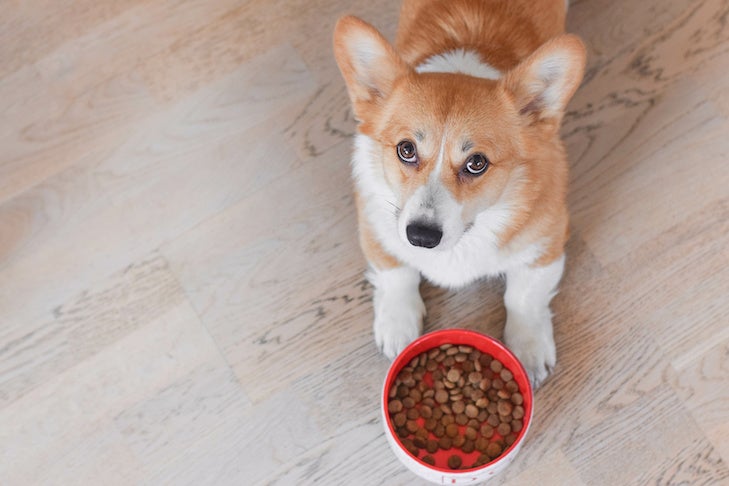
Your dog’s tongue is his stomach’s gatekeeper. By recognizing some foods as yum and others as yuck, it encourages him to eat high-calorie foods and discourages him from scarfing down poison.
If you look in your dog’s mouth (and yours too) you’ll see lots of small bumps called papillae, each of which contains clusters of taste buds. Each taste bud contains about 50 taste-receptor cells. Dogs have fewer taste buds than we do—about 1,700 in the average dog compared to 9,000 in us.
Taste buds in different parts of the tongue respond to different microscopic molecules. Like us, dogs can identify sweet, sour, salty, and bitter. Unlike us, they also have special taste buds aimed at tasting only water. So for dogs, water is probably not “tasteless,” as we usually describe it. These water receptors are located at the tip of the tongue—the part the dog dips in the water and curls under when drinking.
In people, the tip of the tongue is most sensitive to sweet tastes, which is why you like to roll candy around your tongue’s tip. In dogs, the rear of the tongue is most sensitive to sweets. That may be why they seem to gulp them down.
Dogs also have taste buds in the back of their throat, so they can actually taste that food they seem to inhale without chewing!
Light on Sodium
Compared to people, dogs can’t taste salt very well. That’s because they evolved to eat meat, and meat naturally contains enough salt to satisfy their body’s need for it without them having to seek it out. But they can still taste, and appreciate, salt.
Different species have different taste preferences depending on what they evolved to eat. Wolves eat a diet of about 80 percent meat in the wild, so your dog also has a strong preference for meat. But as much as dogs like meat, they’re actually omnivores, which means they eat both plants and animals—and your glasses, and your cat’s poop, and your furniture—pretty much anything!
Tests have shown that most dogs prefer beef and pork over chicken and lamb. They also prefer warm, moist foods over cold, dry foods.
Of course, just like people, each dog has individual preferences. That can partly arise from preferring what food they ate as a puppy. One study even suggests that the food their dam ate while pregnant can influence a puppy’s future preferences.
Most dogs like variety, and if you feed them the same thing every day, they get tired of it. Give them something new and they’ll gobble it up. The exception is dogs who were raised with no variety at all. They are hesitant to try new foods, and often seem to avoid any culinary adventures.
Canine’s Choice
How do you know what taste your dog prefers? One way is to give him a bowl filled with a different food every day and see how much he eats. If you want to be really scientific you can weigh the bowl before and after he eats to see how much he consumed. But what if he licks his bowl clean every day? Or what if he’s just hungrier one day than the next? What if one food is more filling than the other? You might instead try offering two bowls of food side-by-side and letting him choose. Which one does he eat more of? But again, what if he licks both bowls clean? What if he just continues to eat out of whichever bowl he gets to first? What if he prefers to eat only from the right-hand bowl or left-hand bowl?
Dog food companies test hundreds of dogs to see what tastes they prefer, and they have to carefully take into account all questions that could bias the results. They can measure second-by-second how much the dog is eating of each food, and even how often he chews or how big his bites are. You can do your own taste test at home:
- Make sure your dog isn’t food aggressive, as you’ll be working around him with tasty goodies.
- You’ll need two bowls, a piece of screen, and two types of food that are the same small size.
- Place one piece of each type in each bowl and cover both bowls with a screen so your dog can sniff each one.
- Now place the bowls an equal distance from him and remove the screen.
- Record which food he eats first.
- Replace the screen and do it again, alternating sides.
- Do this until your dog consistently shows he has a favorite. Then compare with another flavor.
Originally appeared in the May/June issue of AKC Family Dog Magazine


